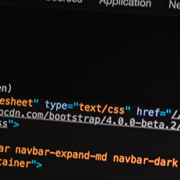Should You Hire a Separate Designer and Developer for Your Business Website?
When establishing a digital presence, creating a website stands as one of the foremost steps for any business. It’s not just about having a website address anymore; it’s about crafting an experience that resonates with your audience, communicates your brand message effectively, and drives conversions. To achieve this, many entrepreneurs grapple with a crucial decision: should they hire a separate designer and developer, or opt for an all-in-one solution?
I specialize in helping small businesses and organizations establish their website footprint, and I can play the role of both website designer and developer. Why is this advantageous to you? Let’s look at the reasons why choosing an all-in-one solution is best for you:
Seamless Integration:
Opting for a single agency or freelancer who handles both design and development can streamline communication and project management. There’s no need to coordinate between different parties, reducing the risk of misunderstandings or discrepancies between design concepts and implementation.
Cost-effectiveness:
Hiring a multifaceted professional or agency might be more cost-effective than engaging separate designers and developers. Since they handle the entire process, from conception to execution, you may save on coordination expenses and potentially benefit from bundled service discounts.
Accountability:
With a single point of contact overseeing the entire project, accountability becomes clearer. If issues arise during development, there’s no ambiguity about who is responsible for addressing them. This streamlined accountability can lead to smoother project execution and quicker problem resolution.
Consistency in Vision:
When one entity handles both design and development, there’s a higher likelihood of maintaining consistency in the project’s vision. The individual or team is intimately familiar with the project’s goals, ensuring that design elements align seamlessly with the website’s functionality.
Ultimately, whether to hire separate designers and developers or opt for an all-in-one solution depends on various factors, including budget, project complexity, and personal preference. However, smaller businesses with limited budgets or simpler website requirements may find an all-in-one solution more practical and cost-effective, providing seamless integration and accountability under one roof.
In either scenario, clear communication, defined project goals, and thorough vetting of potential candidates or agencies are essential for a successful outcome. By carefully weighing your options and aligning them with your business objectives, you can make an informed decision that sets the foundation for a compelling online presence.








